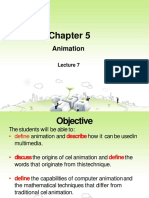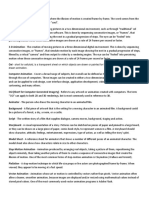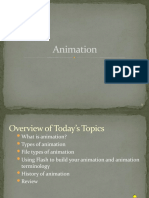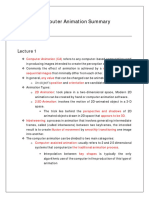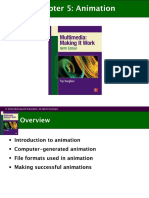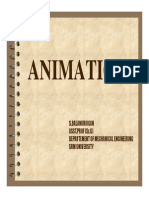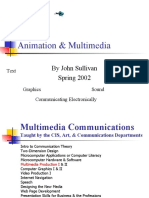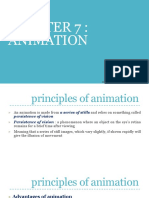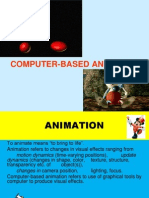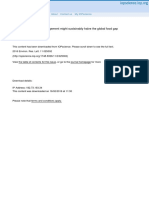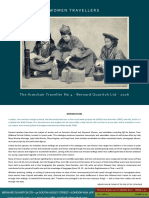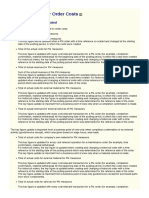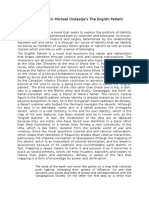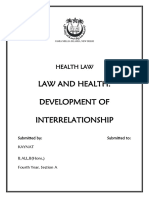0% found this document useful (0 votes)
12 views29 pagesAnimation Terminologies
The document provides an overview of animation, explaining its definition, key concepts such as frame rate, animation cycles, and techniques like lip-syncing and onion skinning. It discusses the biological and psychological phenomena that enable animation, as well as the tools and methods used by animators to create fluid motion. Additionally, it touches on issues like aliasing and the importance of resolution in animation quality.
Uploaded by
bkdhanushofficialCopyright
© © All Rights Reserved
We take content rights seriously. If you suspect this is your content, claim it here.
Available Formats
Download as PDF, TXT or read online on Scribd
0% found this document useful (0 votes)
12 views29 pagesAnimation Terminologies
The document provides an overview of animation, explaining its definition, key concepts such as frame rate, animation cycles, and techniques like lip-syncing and onion skinning. It discusses the biological and psychological phenomena that enable animation, as well as the tools and methods used by animators to create fluid motion. Additionally, it touches on issues like aliasing and the importance of resolution in animation quality.
Uploaded by
bkdhanushofficialCopyright
© © All Rights Reserved
We take content rights seriously. If you suspect this is your content, claim it here.
Available Formats
Download as PDF, TXT or read online on Scribd
/ 29


